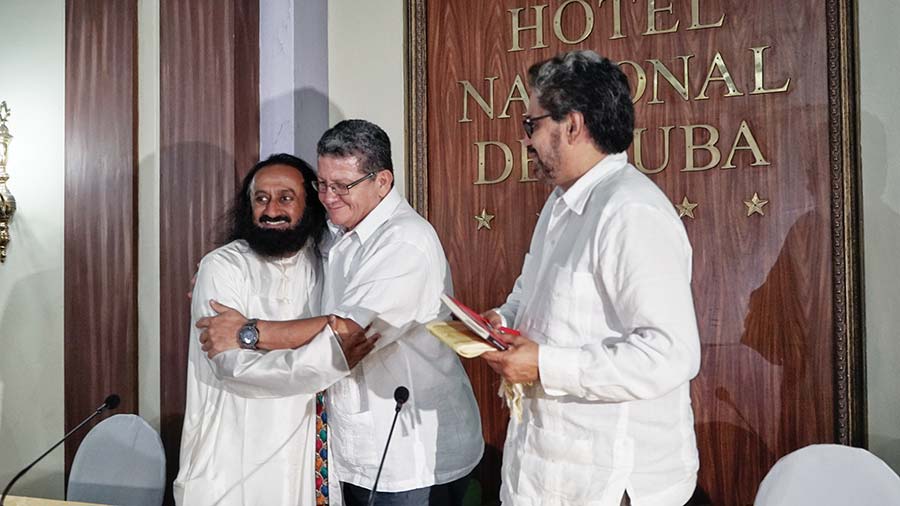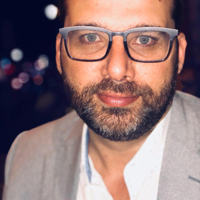As the CEO of TLEX Institute, which trains leaders from global agencies, Fortune 100 companies and governments in fragile states, I have seen how conflict and power struggles can become embedded in how people operate.
Even seasoned progressive leaders can struggle to disentangle identities, cultures and systems from cycles of retaliation and aggression. For the past 16 years, I have observed how global humanitarian and spiritual leader Sri Sri Ravi Shankar, the founder of the Art of Living Foundation, creates space for authentic dialogue and peace-building in Colombia, Kosovo, Sri Lanka, Iraq, and India. Sri Sri brings expertise in how the human mind, emotions and spirit function across religion and culture, which finds its roots not in Western psychology, but in centuries-old Vedic spiritual principles and practices from India; also the origins of Gandhian principles of ahimsa (non-violence).
1. Expanding capacity for peace through meditation.
When the minds of those involved in generating tactics and solutions for peace are clouded over by resentment about the past or anxiety about an uncertain future, authentic dialogue and trust-building cannot occur. Sri Sri regularly guides all parties – including presidents, activists, religious and cultural leaders, guerrillas and terrorists – in meditation and breathing. Research suggests that meditation improves creativity and cognitive functioning, emotional stability and regulation, and response to stress – with enduring effects on brain function. Through meditation, Sri Sri seems to increase the social-emotional capacity of conflicting sides to engage in dialogue – not by talking about it, but by enabling people with mind-body tools that increase their capacity to hold and process complex emotions and see new possibilities.
2. Deep listening as an act of healing.
When those who question injustice (whether real or perceived) are silenced, made invisible, or misrepresented, anger can amplify into violence. Violence can spark a cycle of retaliation and the original reason for the violence can become lost. Sri Sri shares that “when unanswered questions ferment in the mind, they turn into violence.”
The quality of deep listening Sri Sri exhibits by being fully present and non-judgmental allows people to feel their humanity acknowledged – sometimes the one thing most desperately needed on the path to peace and reconciliation. In a meeting Sri Sri held with young black activists from Baltimore, I observed him fully acknowledge, invite, and listen to each person in the room verbalize their anger and frustration, then guide them in a meditation.
He spoke only a few words, yet by the end of the hour-long meeting, the activists were laying out a vision for a peaceful, racial justice movement.
3. Beyond blame and victimhood.
Whether bringing conflicting sides together into one room or conducting individual meetings, Sri Sri engages all sides of a conflict – leaders, victims and rebels. He moves dialogue from a perspective of victim-perpetrator to one where all involved in cycles of violence are victims. After meeting with President Juan Manuel Santos, Sri Sri was invited to engage with FARC leaders (pictured above). “When you see one is a culprit, you demand them to be punished. When you understand that the culprit is also a victim, for the sake of peace, we can walk an extra mile,” Sri Sri said. Even if past wrongs cannot be corrected, this orientation seems to open a window of compassion and unlock the posturing of one side versus another, allowing for progress and movement.
Through spiritual practices and frameworks that connect him to the humanity of people across all sides of conflict, Sri Sri opens up new possibilities for those locked in conflict to envision social transformation through peace.




































